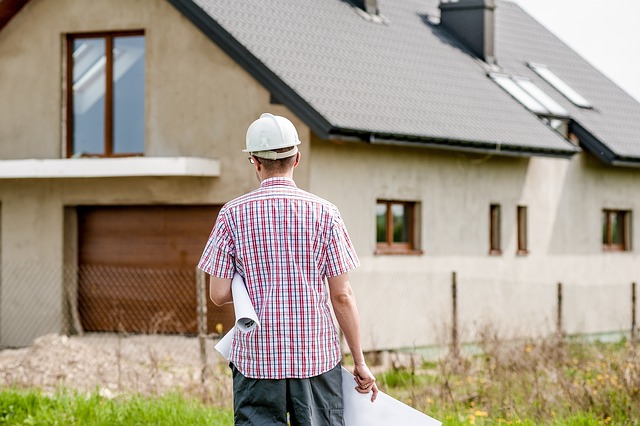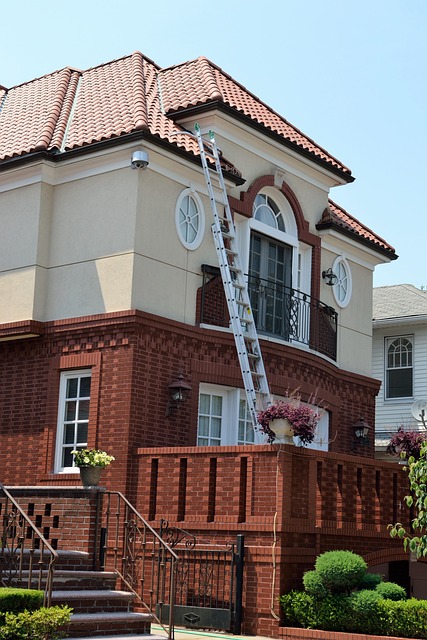Effective home repair and maintenance is a multifaceted process that requires strategic planning, budget management, and adherence to local building codes to ensure both the longevity of your home and its market value. A comprehensive home assessment should prioritize critical repairs, address safety concerns, and identify areas for cost-effective upgrades, while setting aside a contingency fund for unexpected costs. Regular maintenance inspections are essential to prevent minor issues from escalating into major problems, and should include checks on plumbing, electrical systems, HVAC equipment, and energy efficiency. Engaging with professionals who specialize in home repair and maintenance will provide expertise in navigating building codes and ensuring that all renovations are legally compliant and safe. Quality control and systematic inspections at key project stages are crucial to guarantee the functionality and aesthetics of your home, as well as to uphold its safety standards post-renovation. By following these guidelines, homeowners can maintain a well-maintained, comfortable, and valuable living space through consistent home repair and maintenance practices.
Embarking on a home renovation journey can transform your living space into a reflection of personal taste and functional design. This comprehensive guide navigates through the critical aspects of home repair and maintenance projects, offering insights into budget-friendly strategies for cost-effective upgrades, prioritizing essential repairs to maintain your home’s integrity, and selecting trustworthy contractors for your renovation team. Additionally, it provides valuable guidance on adhering to local building codes and permits, culminating with ensuring quality control and inspections. Whether you’re planning a minor facelift or a complete overhaul, this article equips you with the knowledge to manage your project effectively.
- Understanding the Scope of Home Repair and Maintenance Projects
- Budgeting for Home Renovations: Strategies for Cost-Effective Upgrades
- Prioritizing Repairs: Essential Steps to Maintain Your Home's Integrity
- Selecting Reliable Contractors and Tradespeople for Your Renovation Team
- Navigating Local Building Codes and Permits in Home Renovation Projects
- Finalizing the Renovation: Ensuring Quality Control and Inspection
Understanding the Scope of Home Repair and Maintenance Projects

Engaging in home repair and maintenance is an ongoing commitment that requires a clear understanding of the scope of work to be undertaken. Homeowners must assess their property’s condition, identify areas needing attention, and determine the extent of repairs or upgrades required. This process begins with a thorough inspection, which can reveal issues ranging from minor cosmetic fixes to major structural overhauls. It is crucial to differentiate between urgent repair needs, such as leaky faucets, faulty wiring, or damaged roof shingles, and maintenance tasks that enhance the home’s value and longevity, like updating insulation or refinishing floors. A well-planned home repair and maintenance schedule not only ensures the safety and functionality of your living space but also prevents minor issues from escalating into costly problems.
When planning a home repair and maintenance project, it’s advisable to create a detailed list of tasks, prioritized by their urgency and importance. This list should consider both immediate concerns and future upkeep needs. For instance, addressing water damage promptly can prevent mold growth and structural decay, while scheduling regular HVAC system checks can maintain energy efficiency and extend the system’s lifespan. By understanding the full scope of home repair and maintenance projects, homeowners can make informed decisions, allocate resources effectively, and ensure that their living environment remains a comfortable and safe place for years to come.
Budgeting for Home Renovations: Strategies for Cost-Effective Upgrades

Effective budgeting is a cornerstone of successful home renovations, ensuring that your project stays within financial constraints while achieving desired outcomes. Homeowners embarking on renovation projects should begin by assessing their current home repair and maintenance needs to determine essential repairs versus upgrades that enhance both functionality and aesthetics. A thorough evaluation of the property will reveal necessary investments to prevent future costly issues, as well as opportunities for cost-effective upgrades that add value to your home.
To manage costs effectively during a renovation, it’s advisable to set aside a contingency fund of around 10-20% of the total budget. This financial buffer can help cover unforeseen expenses without derailing the project. Additionally, prioritizing repairs that are both critical for safety and contribute to the longevity of your home should take precedence over discretionary upgrades. By focusing on high-impact, low-cost improvements, such as fresh paint, updated fixtures, or energy-efficient appliances, you can significantly enhance your living space without a substantial investment. Sourcing materials and labor judiciously, obtaining multiple quotes, and choosing reputable contractors with competitive rates will further contribute to cost savings. Home repair and maintenance planning is essential for long-term sustainability and resale value, making it a prudent step in the renovation process.
Prioritizing Repairs: Essential Steps to Maintain Your Home's Integrity

When it comes to maintaining your home’s integrity, prioritizing repairs is a critical aspect of effective home repair and maintenance. A well-maintained home not only enhances its longevity but also ensures the safety and comfort of its occupants. Homeowners should begin by conducting a thorough assessment of their property, identifying issues that require immediate attention versus those that can be scheduled for later. Critical repairs, such as addressing structural damage or leaks that could lead to mold growth, should be addressed promptly to prevent further deterioration and costly repairs down the line. It’s important to create a prioritized list of tasks, considering factors like the severity of the problem, the potential risk it poses, and the impact on your home’s overall functionality. For instance, a compromised roof must be fixed before planning a kitchen remodel, as water intrusion can cause extensive damage over time. Similarly, electrical hazards should be mitigated without delay to maintain safety standards within the home.
Once the most pressing repairs are underway or completed, it’s time to plan for routine maintenance tasks that will keep your home in optimal condition. This includes regular inspections of your plumbing, electrical systems, and HVAC equipment, as well as sealing windows and doors to improve energy efficiency. A proactive approach to home repair and maintenance not only helps in preventing costly emergencies but also extends the lifespan of your home’s various components. By staying on top of these tasks, homeowners can ensure that their property remains a safe and reliable space for years to come. Implementing a regular maintenance schedule is key to maintaining your home’s integrity and extending its usable life.
Selecting Reliable Contractors and Tradespeople for Your Renovation Team

When embarking on a home renovation project, assembling a reliable team of contractors and tradespeople is pivotal for the success of your endeavor. Home repair and maintenance expertise are non-negotiable qualities in professionals you entrust with your space. Begin your search by soliciting recommendations from friends, family, and neighbors who have completed similar renovations. Personal referrals often lead to trusted artisans who have a proven track record of quality workmanship. Once you’ve compiled a list of potential candidates, conduct thorough research on each contractor. Review their past projects, ask for references, and scrutinize their qualifications. Verify their certifications, insurance coverage, and bonding capacity to ensure they adhere to industry standards and can protect your investment. It’s also advisable to assess their communication skills and professional demeanor during initial consultations. A contractor who listens attentively, provides clear explanations, and outlines a coherent project timeline is more likely to be responsive to your needs throughout the renovation process. Additionally, consider their availability, as timely completion of tasks is essential for minimizing disruptions in your daily life. By carefully selecting contractors with a strong background in home repair and maintenance, you lay a solid foundation for a smooth and satisfying renovation experience.
Navigating Local Building Codes and Permits in Home Renovation Projects

When embarking on a home renovation project, understanding and adhering to local building codes is paramount for compliance and safety. Homeowners must navigate these regulations carefully, as they dictate allowable construction methods, material standards, and design specifications. Non-compliance can lead to legal issues or the need to dismantle work that has already been completed. It’s advisable to consult with local building authorities early in the project to obtain the necessary permits. This step is crucial for ensuring that all aspects of the renovation align with zoning laws, structural requirements, and safety standards. Home Repair and Maintenance expertise can be instrumental in this process, as professionals familiar with these codes can facilitate a smoother renovation experience by anticipating potential challenges and guiding adherence to legal frameworks. By securing permits and staying informed on code updates throughout the project, homeowners can avoid costly setbacks and ensure their renovated space meets all necessary local regulations. Engaging in thorough planning and leveraging professional insights is essential for a successful home renovation that stands the test of time and regulatory scrutiny.
Finalizing the Renovation: Ensuring Quality Control and Inspection

When the time comes to finalize a home renovation project, quality control and inspection play pivotal roles in ensuring that the renovations meet both aesthetic and functional standards. Homeowners should collaborate closely with contractors during this phase to confirm that every aspect of the repair and maintenance work aligns with the initial plan. This includes verifying the integrity of materials used, the precision of craftsmanship, and the effectiveness of new installations. It’s imperative to conduct thorough inspections at various stages of completion to identify any discrepancies or issues that may arise. Such checks help prevent costly repairs down the line and ensure long-term satisfaction with the renovation outcomes. Professional inspectors can provide an objective assessment, ensuring compliance with local building codes and standards, which is essential for safety and legal adherence. By focusing on meticulous quality control and regular inspections throughout the renovation process, homeowners can maintain a high standard of repair and maintenance, ultimately leading to a safer, more comfortable, and more valuable home.
Effective home renovation planning and management are pivotal for transforming living spaces into functional, comfortable, and aesthetically pleasing environments. This article has delved into the nuances of navigating home repair and maintenance projects, offering strategic financial planning for cost-effective upgrades, and guiding the prioritization of essential repairs to maintain your home’s structural integrity. Selecting a trustworthy team of contractors and tradespeople is crucial, as is understanding and adhering to local building codes and permits. To culminate these efforts, ensuring quality control and passing inspections are vital steps to finalize any renovation project successfully. With careful planning and attention to detail, your home renovation can yield a space that not only enhances your daily life but also stands the test of time.
